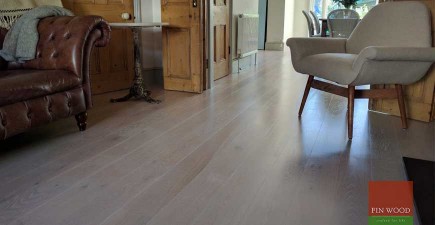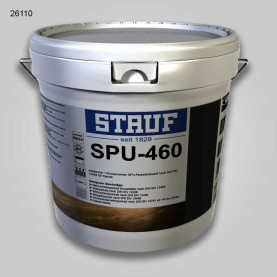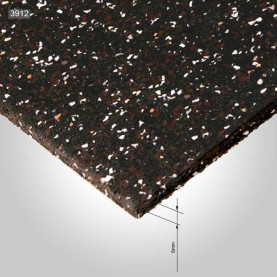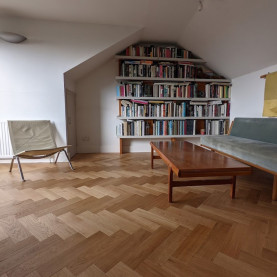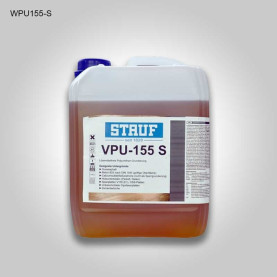Which adhesive is recommended for gluing down a hardwood floor?
The beginnings
Wood flooring has been used for thousands of years. However, glued down floors or stuck down wooden floors are a recent solution.
For decades the only glued down floors were parquet blocks using hot tar (bitumen). The cold bitumen adhesives, which followed, have also been used for parquet flooring until recently, and there are still many floors that are in use today, installed in this way.
Unfortunately, bitumen adhesives don’t stand the test of time. As the bitumen ages it becomes brittle and less able to cope with the stresses that are present in a wooden floor.
Timber is a natural material which reacts to changing levels of humidity, expanding during the humid season, and shrinking during winter when the heating system is turned on. Alongside this, a wooden floor is subjected to tensions as the floor is walked over. The adhesive layer in contact with the subfloor has to be able to cope with these stresses in order to avoid failure – the detaching of the timber.

Glued down wood floor with bitumen
The first adhesives
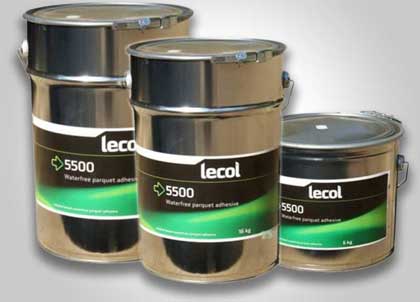
Lecol 5500 adhesive
Adhesive development progressed and the use of solvent-based adhesives replaced the tar. Cheap and simple to use these adhesives became widespread. Although solvent adhesives tend to become hard and seem to quite brittle when cured, they are slightly flexible when under stress. Because of this solvent adhesives are a better solution compared to a completely rigid and brittle tar (bitumen) bonding.
The biggest disadvantage of these adhesives is still the reduced flexibility and added to this, often during the curing process, the adhesive shrinks thus weakening the bond.
One of the mostly used adhesives of this kind is Lecol 5500.
Reactive adhesives
As the wood flooring industry advanced more performant adhesives were needed to keep up the pace. So the new solutions have developed. These adhesives are based on polyurethane or silane (silicone derivatives) and set / cure through a chemical reaction as opposed to the simple evaporation of water or solvent.
This makes them very reliable with less influence from temperature and humidity allowing the installed flooring to be sanded after just 24 hours, in some cases even sooner, depending on the reactivity of the specific adhesive used.

Stauf SPU-460 adhesive
Reactive, silane adhesives have additional benefits compared to PU products. They react with atmospheric water, so require no additional catalyst. Also, they are very clean to use; easily removed from tools, hands, and the surface of pre-finished flooring. The adhesives are free from solvent and water, so there is no impact on the timber in terms of swelling.
Silane adhesives can be formulated to provide different physical properties in terms of their shear strength and flexibility. This has led to the development of adhesives for specific applications, such as for very wide boards, where a high shear strength is needed, and for engineered products where greater elasticity is of benefit.
Reactive adhesives can be used onto ceramic tiles, moisture barriers, glass and metal, and their use has simplified the preparation of a subfloor prior to installation.
In the end, the only way to manufacture high performance adhesives that retain their shear strength and elasticity as they age, is to use high quality ingredients. This may result in a higher cost, but when it comes to a floor which should last a lifetime, is it worth compromising on quality?
We recommend our well tried and tested adhesive Stauf SPU460.








